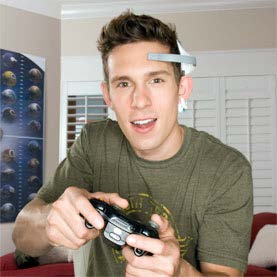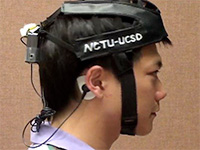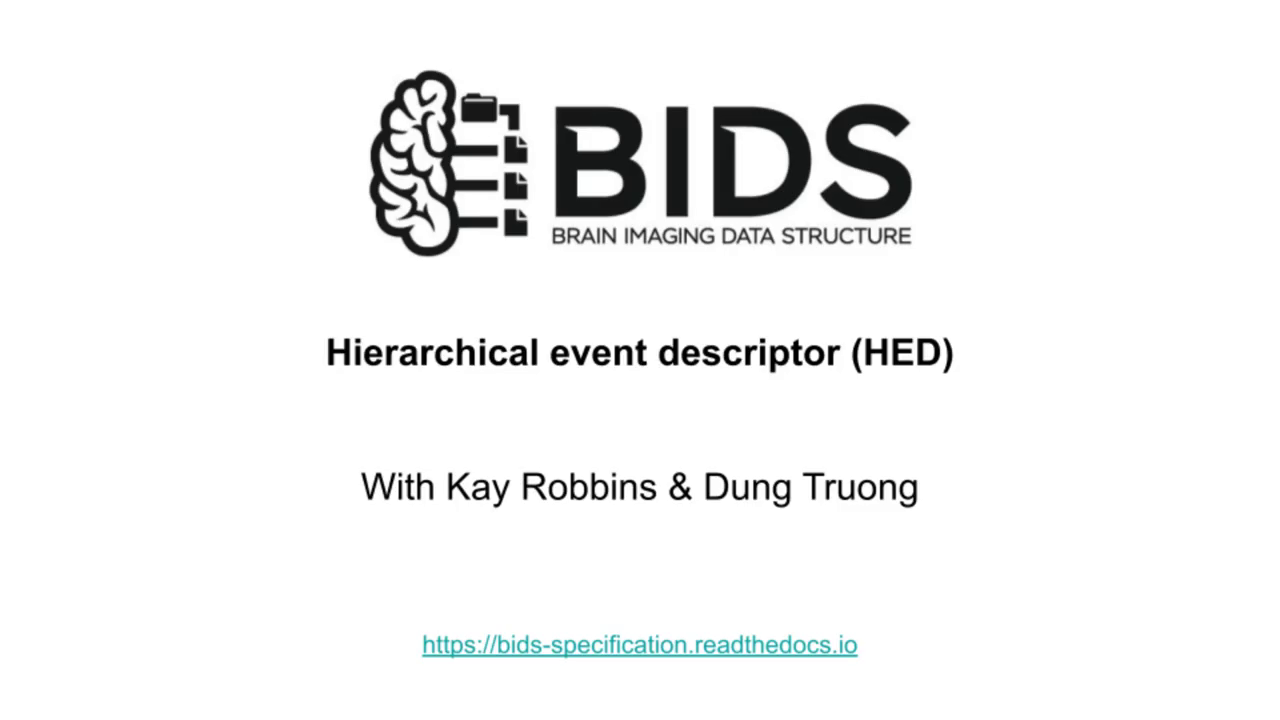News
Recent News
September 20, 2021 — What are hierarchical event descriptors?
Kay Robbins and Dung Truong come to tell us about Hierarchical event descriptors and how they integrate with BIDS. Slides: https://osf.io/vxe4y/ --- Hierarchical event descriptors Who are we? We are members of the HED working group…. our group wants to make large-scale neuroimaging analyses easy and reliable. More...
Past News
2019-08-01 — NIMH has funded the EEGLAB and Neuroscience Gateway teams to build an EEG portal to the OpenNeuro data archive and tool resource.
UCSD scientists Scott Makeig and Arnaud Delorme at the Swartz Center for Computational Neuroscience (SCCN) of the Institute for Neural Computation (INC), together with co-PIs Amitava Majumdar from the San Diego Supercomputer Center (SDSC), UCSD, and Russ Poldrack of Stanford University, have received a five-year , nearly $5M grant from the U.S. National Institutes of Health (NIH) to create a portal (‘NEMAR’) for human electrophysiological data to the OpenNeuro data archive and tools resource (OpenNeuro.org) developed by Poldrack and colleagues. More...
2019-04-01 — Supercomputers Aid Our Understanding of Complex Brain Waves
Even though electroencephalography (EEG) has been used for almost 100 years, this safe and painless test of brain activity remains an efficient method for recording aspects of rapid brain activity patterns supporting our thoughts and actions. Leveraging the power of the Comet supercomputer at the San Diego Supercomputer Center (SDSC) at UC San Diego, campus researchers have demonstrated they can efficiently analyze more than 1,000 EEG 128-channel high-density data sets via the new Open EEGLAB Portal running on SDSC’s Neuroscience Gateway (NSG). More...
2017-12-12 — What Learning Looks Like: Creating A Well-Tuned Orchestra In Your Head
What does the brain look like when you’re playing music? According to students at Kellogg Elementary School in Chula Vista, it’s definitely pink and, if you could shrink yourself down and step inside, a relaxing place to be. More...
2017-03-23 — New SCCN invention could revolutionize testing for glaucoma!
In this interview from AGS 2017, Dr. Felipe A. Medeiros discusses an exciting new technology for visual field (VF) testing called a portable brain-computer interface, which combines virtual reality (VR) goggles with electroencephalogram (EEG) sensors. More...
2014-12-10 — New UC MERCI initiative named a UC president's Research Catalyst Award winner
Scott Makeig, research scientist and director of the Swartz Center for Computational Neuroscience at the Institute for Neural Computation of UC San Diego, has brought together a research group from four UC campuses who have won a $300,000 President’s Research Catalyst Award, one of five such awards across the UC system announced by President Janet Napolitano. More ...
2012-01-27 — Notion in Motion: Wireless Sensors Monitor Brain Waves on the Fly

"TIP OF THE ICEBERG": NeuroSky, Inc.'s brain-computer interface shown here just scratches the surface of what is possible thanks to advances in mobile electroencephalographic brain-wave detection technology, says University of California, San Diego's Scott Makeig.
Read the article online [PDF]
Written By Amber Dance
Scientific American
2012-02-23 — Mind-reading helmets on the horizon for fighter pilots

Thanks to current advances in electroencephalographic (EEG) brain-wave detection technology, military commanders could soon be monitoring her mental state via helmet sensors, looking for signs she is concentrating on her flying and reacting to the warning light.
Read the article online [PDF]
Written By Allison Barrie
FoxNews.com
2011-05-16 — Brain-Monitoring Technology Makes Media Waves
Brain waves, particularly those being studied by UC San Diego researchers, have been making media waves. ABC News, KPBS, UCSD TV and other media outlets have all recently featured new brain-computer interface technology developed by Tzyy-Ping Jung and associates Yu-Te Wang and Yijun Wang of the Institute for Neural Computation. The innovative technology heralds a new and fast-advancing generation of mobile, wireless brain-activity-monitoring systems. More...
2010-03-03 — Press Release: New Space Reopening
Swartz Center for Computational Neuroscience University of California San Diego https://sccn.ucsd.edu The Swartz Center for Computational Neuroscience (SCCN) and its parent Institute for Neural Computation (INC) have moved into new quarters in the recently completed extension of the San Diego Supercomputer Center on the UCSD campus. On Thursday, March 4, the Swartz Center will have a brief opening ceremony followed by a joint INC/SCCN Open House featuring open talks by Institute Co-Directors Terrence Sejnowski and Gert Cauwenberghs on the past and future of the Institute followed by demonstrations of its new research technology.More...
2007-07-16 — Leading Brain Theory Researchers to Convene July 28-31 at UC San Diego for Annual Meeting of Sloan-Swartz Centers for Theoretical Neurobiology
Already a global center for neuroscience research, the University of California, San Diego will host top scholars working on theoretical and quantitative approaches to issues in neurobiology during the 13th annual summer meeting of The Sloan-Swartz Centers for Theoretical Neurobiology on the UCSD campus July 28-31. More...
2001-11-16 — Press Release: Swartz Center for Computational Neuroscience Dedicated at UCSD
The University of California San Diego (UCSD) today dedicated the new Swartz Center for Computational Neuroscience (sccn.ucsd.edu), in recognition of private funding provided by the Swartz Foundation of Old Field, New York. The Swartz Center will integrate theoretical research on brain systems with experimental work on brain imaging at the Institute for Neural Computation at UCSD (directed by Terrence Sejnowski) and at the Sloan/Swartz Center for Theoretical Neurobiology at the Salk Institute (directed by Thomas Albright). A goal of the Swartz Center is to better understand human behavior by exploring links between the microscopic (single neuron) and macroscopic levels of brain dynamics. More...
